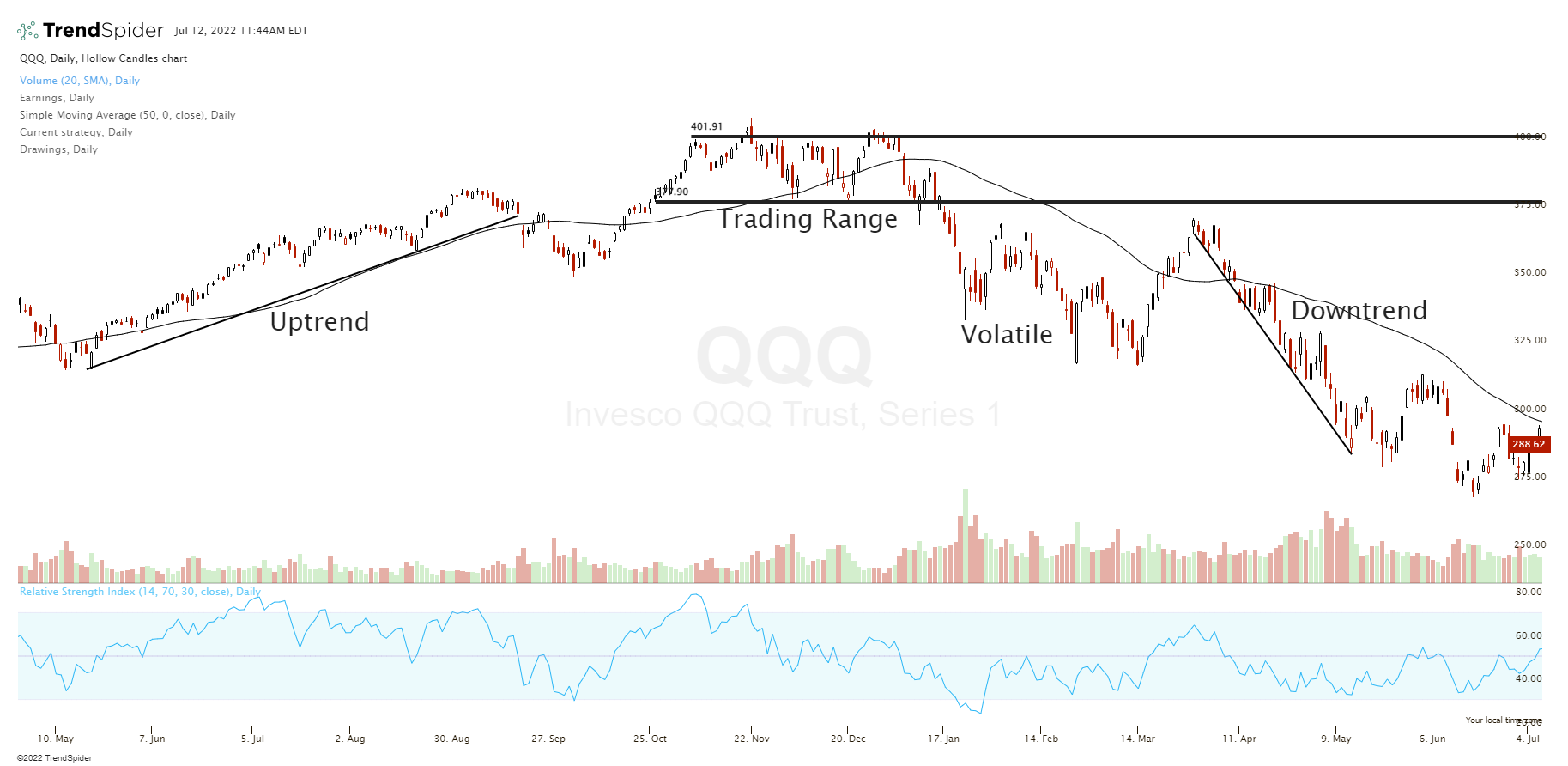Here are five things to quantify before entering any trades. These areas should be based on the parameters of your own time frame and trading system.
Path of Least Resistance
The first filter for any trade entry is the question: “Is the chart your trading in an uptrend, downtrend, range, or highly volatile?”
“The answer to the question, what is the trend?” is the question “What is your time frame?”
Uptrends have higher highs and higher lows, this is when long entry signals can happen whether buying the dip or momentum signal.
Downtrends have lower highs and lower lows, this is when short signals can happen whether shorting rallies or selling weakness short.
Trading ranges have the same area of high price resistance and low price support and this is where selling resistance and buying support should be signaled.
Volatile charts will have very large trading ranges with little respect for resistance, support, or technical indicators and can move both up and down in short periods of time.

Price Area of Value or Interest
The next question is what is the nearest key price area with the highest probability of interest for buyers and sellers? This is different for each type of chart and technical context.
The area of interest in an uptrend can be buying the dip at the lower 50-day moving average.
The area of interest in a downtrend can be selling rallies back into the higher 50-day moving average.
In a trading range the area of interest could be buyers at the price support level.
In volatile ranges the area of interest can be deep dips to the 30-RSI or strong rallies to the 70-RSI that can happen in one day before reversing.
Entry Signal
An entry signal is the quantified reason that you are going long or going short a chart based on a backtested technical indicator, price action, or technical analysis. Your entry signal should always create a good risk/reward entry and a high probability of a winning trade.
Exit Strategy for Losing Trades
You should have an exit signal for losing trades. A stop loss set at a price level that should not be reached if the trade is going to work out in your favor as a winner. A stop loss should be determined before you take the entry and quantify your maximum loss if it is triggered based on your position sizing. Keeping losses small is a major key to profitable trading over the long term. The stop loss should ensure a good risk/reward ratio by limiting the risk side.
Exit Strategy for Winning Trades
At entry you should have a profit target in mind based on technical levels and the historical chart pattern being traded. The exit signal for a winning trade helps establish the reward part of the risk/reward ratio at entry. A profit target is where you will lock in gains if your best case scenario for a trade plays out. This is the price or technical level where you will take your money off the table as the future reward potential is not enough to justify remaining in the trade at the new price levels.
If you’re interested in trading the price action in the markets you can check out my best selling price action trading book here or all my trading books on Amazon here. I have also created trading eCourses on my NewTraderUniversity.com website here. My educational resources can save you both time and money in your trading journey.
